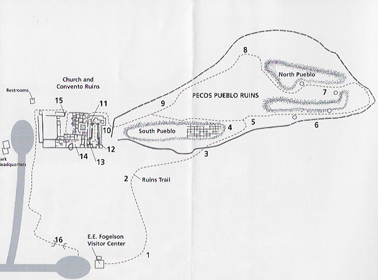
Location
In Visitor Center parking lot (N35D33'00.239 X W105D41'10.332)
Flowers first observed: 7/7/17
The Plant w/Flowers
 |
 |
The Flowers
 |
 |
Distribution
"An annual that thrives on bare soil, Horseweed is soon crowded out as perennials become established. Originally a North American plant, it has spread to Europe, where it colonizes open disturbed sites." (Wildflower.org)
"Annual herb, 50-150 cm tall; stems simple below and branched within the inflorescence, glabrous to spreading-hairy. Ecology: Found in disturbed soil from 1,000-8,000 ft (305-2440 m); flowers July-October." (SEINet)
Description
"A coarse weed with erect bristly-haired stem that has branching clusters of small, cup-like, greenish-white flower heads arising from upper leaf axils. The minute white rays do not spread and thus are not showy; the numerous disk flowers are yellow." (Wildflower.org)
"Leaves: Alternate; lower leaves short-petiolate with oblanceolate blades to 10 cm long; upper leaves sessile, reduced in size, becoming linear; margins serrate to entire, often ciliolate; faces usually glabrate, with stiff, spreading hairs on nerves. Flowers: Flower heads appearing discoid but actually inconspicuously radiate; many heads arranged in a terminal, open, leafy panicle; involucre (ring of bracts wrapped around the flower head) turbinate, 2-4 mm high, the bracts (phyllaries) in 2-4 series, glabrous to sparsely strigose, the outer phyllaries greenish to straw-colored, the inner phyllaries straw-colored to reddish; ray florets 20-30, the laminae (ray petals) up to 1 mm long, white; disc florets 8-30 or more, the corollas yellow. Fruits: Achenes about 1 mm long, with minutely stiff hairs, topped with a pappus of white capillary bristles, 2-3 mm long." (SEINet)
Ethnobotanical Uses
Food:
"Miwok Vegetable Raw, pulverized leaves and tender tops, flavor similar to onions, used for food." (Moerman 174)
Medicine:
"--- Hopi Analgesic Poultice of rubbed plant applied to temples for headache. --- Keres, Western Burn Dressing Crushed plant rubbed on sunburns. Dermatological Aid Plant beaten into a paste and rubbed on the skin for blotches or liver spots. --- Navajo, Kayenta Dermatological Aid Plant used as a lotion for pimples. Disinfectant Hot poultice of plant applied to infants with prenatal infection. Ear Medicine Hot poultice of plant applied for earaches. Gastrointestinal Aid Plant used for stomachaches. Pediatric Aid Hot poultice of plant applied to infants with prenatal infection. --- Zuni Respiratory Aid Crushed flowers inserted in nostrils to cause sneezing, relieving 'rhinitis.'" (Moerman 173-4)
Internet Links